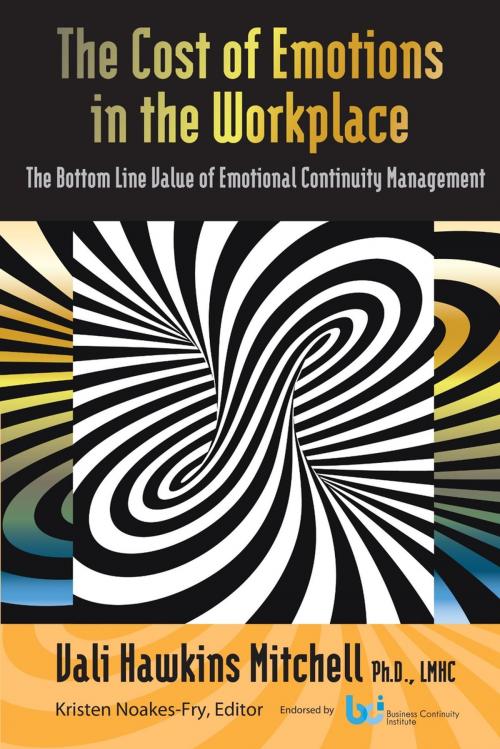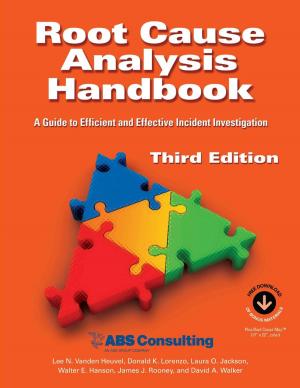The Cost of Emotions in the Workplace
The Bottom-Line Cost of Emotional Continuity Management
Business & Finance, Management & Leadership, Management, Human Resources & Personnel Management| Author: | Vali Hawkins Mitchell | ISBN: | 9781931332842 |
| Publisher: | Rothstein Publishing | Publication: | November 24, 2014 |
| Imprint: | Rothstein Publishing | Language: | English |
| Author: | Vali Hawkins Mitchell |
| ISBN: | 9781931332842 |
| Publisher: | Rothstein Publishing |
| Publication: | November 24, 2014 |
| Imprint: | Rothstein Publishing |
| Language: | English |
Finally – a people management guide that goes way beyond the typical "problem employee" books to help you understand and manage the entire emotional culture of your organization. Many of us have witnessed – sometimes in helpless horror – how a simple problem can spin into a corporate crisis as people take sides, outside professionals are brought in, and company reputations suffer, as this description illustrates: "Everything was exposed and raw as if a common energy had stripped away the veneer of civilized behaviors...People took sides, hid, ran, quit, overworked, underworked, ate too much, drank more, complained more, went silent, changed jobs, exited. They reacted as if all their system had been tossed into the air and was never going to land again." This wasn't the scene of a criminal act, earthquake, or terrorist attack. Rather, it was the disruptive and costly outcome of months of escalating workplace tension in the wake of changed management policies. Like a tornado, two violent co-workers had left 600 others in emotional rubble. That company could have been prepared with corporate policies and procedures to defuse such emotionally charged situations - long before alarming human and financial costs hit its bottom line. Managers could have learned to recognize and stop “emotional spinning” from gathering destructive force. The old paradigm of separating humans from humanity during work hours is not only antiquated thinking, it's high risk corporate behavior.
“Dr. Vali” calls her ground-breaking solution Emotional Continuity Management. She provides tools you can use right now to avoid costs in decreased productivity, injured goodwill, employee turnover, plummeting employee engagement, and severed business relationships.In this practical book, Dr. Vali gives you:
Real-life case studies that show you how to calculate bottom line, dollars and cents costs of disruptive employees and managers and emotionally charged incidents.
Proven techniques to help you identify variations in behavior that are early warning signs of trouble. She compares them to “tornado warnings” and provides a 5-point scale.
An understanding of the psychology driving “emotional terrorists,” who stage themselves as victims and gather an army of acolytes to assist in their campaigns of emotional disruption, and a game-plan for managing such attacks before, during and after an event.
Practical tools for managing workplace emotions before, during and after an emergency, based on the author’s extensive on-the-ground experience in counseling first responders and victims during major national and international disasters.
Policies and procedures for working with military veterans returning to the workplace - and the need to deal with PTSD.
Techniques for containing and mitigating the damage created by workplace bullies - and when to decide if an "amputation" is required or a less-extreme strategy is needed.
Sample policies and plans, and detailed instructions for company-wide training programs, up and down the organization.
Finally – a people management guide that goes way beyond the typical "problem employee" books to help you understand and manage the entire emotional culture of your organization. Many of us have witnessed – sometimes in helpless horror – how a simple problem can spin into a corporate crisis as people take sides, outside professionals are brought in, and company reputations suffer, as this description illustrates: "Everything was exposed and raw as if a common energy had stripped away the veneer of civilized behaviors...People took sides, hid, ran, quit, overworked, underworked, ate too much, drank more, complained more, went silent, changed jobs, exited. They reacted as if all their system had been tossed into the air and was never going to land again." This wasn't the scene of a criminal act, earthquake, or terrorist attack. Rather, it was the disruptive and costly outcome of months of escalating workplace tension in the wake of changed management policies. Like a tornado, two violent co-workers had left 600 others in emotional rubble. That company could have been prepared with corporate policies and procedures to defuse such emotionally charged situations - long before alarming human and financial costs hit its bottom line. Managers could have learned to recognize and stop “emotional spinning” from gathering destructive force. The old paradigm of separating humans from humanity during work hours is not only antiquated thinking, it's high risk corporate behavior.
“Dr. Vali” calls her ground-breaking solution Emotional Continuity Management. She provides tools you can use right now to avoid costs in decreased productivity, injured goodwill, employee turnover, plummeting employee engagement, and severed business relationships.In this practical book, Dr. Vali gives you:
Real-life case studies that show you how to calculate bottom line, dollars and cents costs of disruptive employees and managers and emotionally charged incidents.
Proven techniques to help you identify variations in behavior that are early warning signs of trouble. She compares them to “tornado warnings” and provides a 5-point scale.
An understanding of the psychology driving “emotional terrorists,” who stage themselves as victims and gather an army of acolytes to assist in their campaigns of emotional disruption, and a game-plan for managing such attacks before, during and after an event.
Practical tools for managing workplace emotions before, during and after an emergency, based on the author’s extensive on-the-ground experience in counseling first responders and victims during major national and international disasters.
Policies and procedures for working with military veterans returning to the workplace - and the need to deal with PTSD.
Techniques for containing and mitigating the damage created by workplace bullies - and when to decide if an "amputation" is required or a less-extreme strategy is needed.
Sample policies and plans, and detailed instructions for company-wide training programs, up and down the organization.















